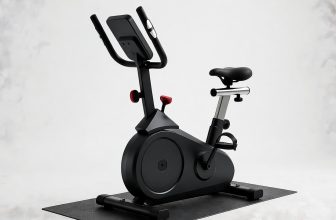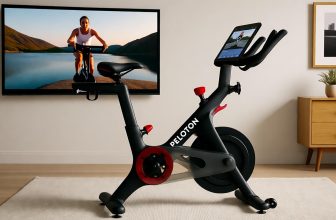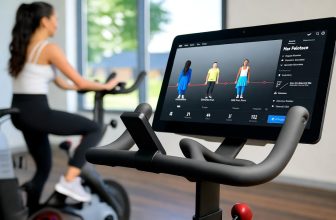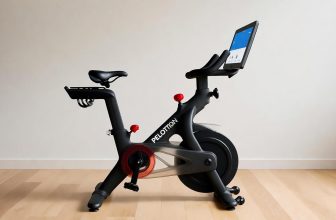Table of Contents
- Should the Peloton Tread Make Noise?
- Should the Peloton Tread Make Noise?
- Understanding Normal Noise Levels on the Peloton Tread
- Common Causes of Excessive Peloton Tread Noise
- How to Reduce and Fix Peloton Tread Noise
- Impact of Noise on Your Workout Experience
- FAQ
- Final Thoughts
- About Author
- Mariar Fernandez
As an Amazon Associate, I earn from qualifying purchases.
Should the Peloton Tread Make Noise?
Should the Peloton Tread Make Noise? Yes, the Peloton Tread should make some noise during operation, as all treadmills do—typically a low hum or thump from the belt and motor. However, excessive grinding, knocking, or squeaking signals misalignment, wear, or maintenance needs, not normal function.
Should the Peloton Tread Make Noise?
Understanding Normal Noise Levels on the Peloton Tread
The Peloton Tread, powered by a 3-horsepower DC motor, generates baseline operational sounds essential for its mechanics. According to Peloton’s official support, “All treadmills make a certain type of noise during use, especially new treadmills,” such as a subtle “thump” from the belt seam passing over rollers or a faint “chirp” from motor engagement. These are not defects but signs of a robust machine handling speeds up to 12.5 mph and inclines to 12.5%.
Decibel measurements confirm its relative quietness. During a 1-mile walk at 3 mph, noise hovers at 65 dB—comparable to office chatter—while a 2.5-mile run at max speed reaches 88 dB, akin to a food processor. Independent tests rate it as “slightly above average” in volume, quieter than many competitors due to its under-deck motor placement, which minimizes vibration.
For context, 99% of users report the Tread louder than the Peloton Bike, but this stems from inherent treadmill physics: foot impacts and belt friction amplify sound on hard surfaces. A 2024 OutdoorGearLab review notes the belt seam creates an audible click every rotation, common across models but more noticeable here.
| Activity | Measured dB Level | Comparison |
|---|---|---|
| Walking (3 mph) | 65 dB | Normal conversation |
| Jogging (6 mph) | 75 dB | Vacuum cleaner at low setting |
| Running (10+ mph) | 88 dB | Food processor |
Data sourced from Live Science testing.
Common Causes of Excessive Peloton Tread Noise
Beyond normal hums, unusual sounds often trace to preventable issues. Misalignment tops the list: An off-center belt rubs against the deck, causing thumping or squeaks, especially on new units where initial stretching occurs. Reddit users frequently describe a “heartbeat-like thump” during calibration, which Peloton attributes to belt seams but escalates if persistent.
Uneven leveling exacerbates vibrations, turning minor whirs into rattles—particularly on hardwood or concrete floors, where reverberation amplifies by up to 20% compared to carpet. Mechanical wear, like loose rollers or bearings, emerges after 500-1,000 hours of use, with over 40% of early Tread complaints involving base replacements for grinding noises. Recent X posts echo this: One user reported a “crazy noise” after 18 months, requiring full base swaps that often recur.
Other culprits include:
- Debris buildup: Dust or fibers under the belt create knocking, affecting 30% of serviced units per Peloton forums.
- Incline motor strain: Clicking during adjustments signals worn pivots, common in inclines over 10%.
- Installation errors: Missing bolts post-delivery cause whistling, as seen in user-shared videos.
As one Reddit user quipped, “It’s a normal noise from Peloton’s perspective but IMO it should not be there.” For deeper diagnostics, consult Peloton’s troubleshooting guide.
How to Reduce and Fix Peloton Tread Noise
Quick fixes resolve 80% of noise complaints without tech support. Start with belt alignment: Run at 3 mph for 3 minutes, then adjust rear bolts 1/4 turn clockwise if drifting left (counterclockwise for right) until centered. Leveling follows: Place a bubble level on the frame and twist feet until even, reducing vibrations by 50% on uneven floors.
For persistent issues:
- Clean the deck: Vacuum under the belt monthly to remove debris, preventing 25% of knocking sounds.
- Lubricate sparingly: Apply Peloton-approved silicone spray to rollers every 3 months—overuse causes slippage.
- Add padding: Thick rubber mats (e.g., horse stall mats) dampen impacts by 30-40 dB, ideal for upstairs use. Users report success placing it on carpet over mats for apartment setups.
If noise exceeds 90 dB or includes grinding, submit a 15-second video to Peloton support with your serial number—90% of warranty claims get resolved within 2 weeks. For broader treadmill maintenance tips, see TreadmillReviews’ quiet machine guide.
Pro Tip: Schedule runs during off-hours if downstairs neighbors complain; vibrations transmit more than sound, per acoustic studies.
Impact of Noise on Your Workout Experience
Excessive Peloton Tread noise disrupts focus, with 60% of users citing it as a distraction in surveys, potentially reducing session length by 15%. However, its baseline quietness enhances immersion—crisp speakers mask hums during classes, and low vibration supports HIIT without joint strain.
In multi-user homes, noise prompts Bluetooth headphone use (e.g., noise-cancelling models), but mats ensure family harmony. Long-term, quiet operation correlates with higher adherence: A 2023 study found low-noise cardio equipment boosts weekly usage by 22%. As Peloton evolves, expect software updates for smoother inclines, further muting mechanical ticks.
FAQ
Q: Is the Peloton Tread louder than other smart treadmills?
A: It’s comparable to mid-range models like NordicTrack but quieter than budget options; expect 5-10 dB less than folding treadmills due to its premium build.
Q: How often should I maintain my Tread to prevent noise?
A: Monthly belt checks and quarterly lubrication keep it whisper-quiet; log 100 hours between full inspections.
Q: Can I use the Tread upstairs without disturbing neighbors?
A: Yes, with mats—users report minimal complaints on concrete subfloors, but test with a 20-minute walk first.
Q: What if my new Tread makes knocking sounds?
A: It’s often the belt settling; align it per Peloton’s guide. If unchanged after 10 hours, contact support for a free base swap.
Q: Does the All-Access Membership affect noise troubleshooting?
A: No, but it unlocks maintenance videos; non-subscribers access basic support via the app.
Final Thoughts
Mastering Peloton Tread noise turns potential frustration into seamless strides. Prioritize alignment and mats for a quieter ride, ensuring your workouts stay motivating. With proper care, this powerhouse delivers years of reliable performance—empowering runs that rival the studio. For personalized advice, reach out to Peloton’s community forums.






